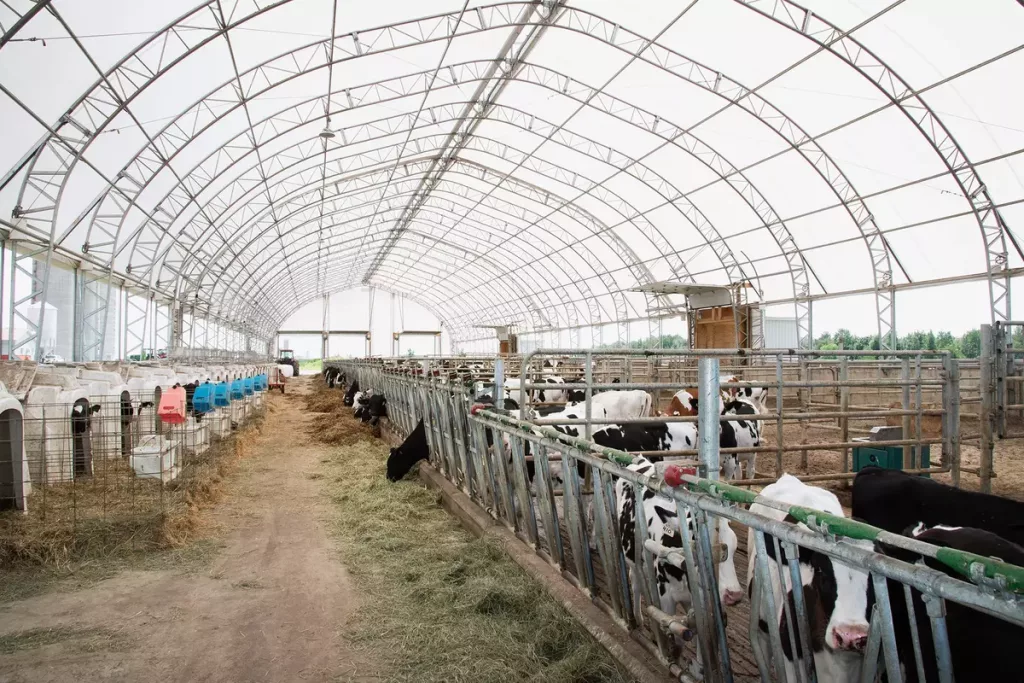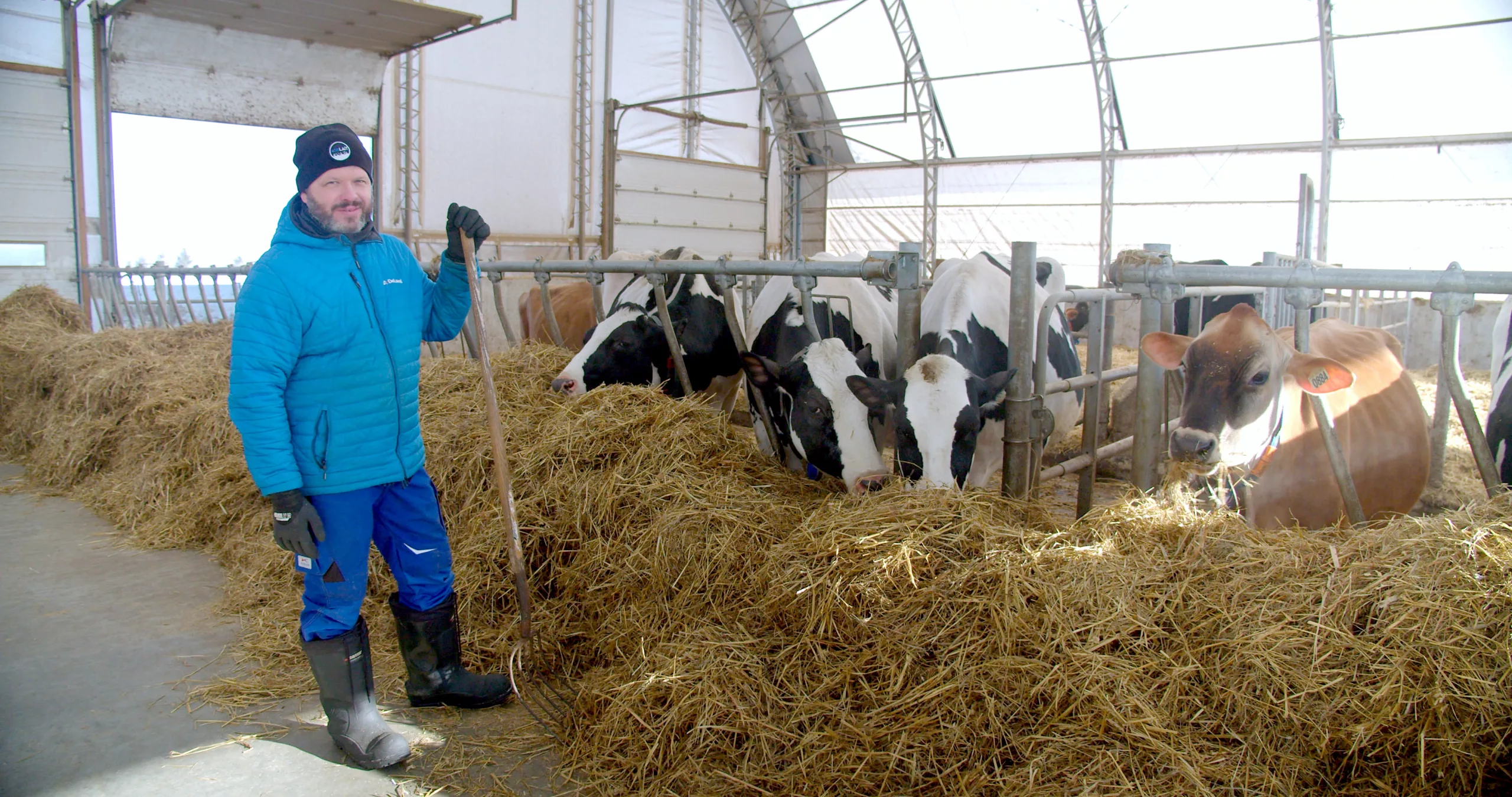A MegaDome livestock fabric building is purpose-built to promote animal wellness and operational efficiency year-round. Whether you’re housing dairy cows, sheep, goats, oxen, or replacement heifers, our structures offer superior ventilation, natural light, and temperature control to ensure a healthier, low-stress environment. Designed with durability and flexibility in mind, MegaDome buildings adapt to your farm’s evolving needs while helping reduce energy and maintenance costs—making them an ideal solution for today’s progressive livestock operations.
The ideal building for dairy farmers
Dairy producers must have a replacement strategy to ensure the profitability of their farms. “Analysis of the cost of producing milk in Canada indicates that 12% of the expenses incurred in dairy production are used to ensure the replacement of cows in the herd.”1 Producers must, therefore, provide a suitable space to protect their replacement animals.

Requirements for replacement animals
Producers must respect certain requirements to meet the needs of their replacement animals. They have to, among other things, provide sufficient quality water, an accessible feeder with quality grains and fodder, as well as shelter. A MegaDome livestock fabric building is the perfect shelter for animals, providing your herd with a safe and economical space that is protected from the elements.
Applications for Livestock Production Solutions
Calving Barn
A calving barn provides a controlled, sheltered environment for birthing, promoting animal safety and reducing stress during calving. Proper ventilation and lighting support herd health and ease of monitoring.
Loafing Barn
Loafing barns offer a comfortable, open space where cattle can rest, feed, and move freely when not milking or feeding. These structures reduce animal stress and improve herd welfare.
Breezeway
A breezeway barn uses natural airflow to enhance ventilation and reduce humidity, ideal for maintaining a dry and healthy environment. It serves as a central corridor for livestock movement or as a multi-purpose livestock shelter.
Free Stall Barn
Designed for dairy operations, free stall barns allow cows to lie down in individual stalls, promoting cleanliness and reducing injury. They optimize space and enable better manure management.
Milking Parlour
A milking parlour is a dedicated area optimized for efficient, hygienic milk collection. These systems reduce labor time and improve cow comfort while supporting high production standards.
The features of a MegaDome livestock fabric building
Bright and protected from the elements
All MegaDome livestock fabric buildings are covered with a PowerShieldⓇ membrane. This superior-quality membrane protects your herds from the elements while providing a bright environment for them to shelter in. The option of a PowerShieldⓇ membrane designed specifically for the agricultural sector is also available. This option ensures superior comfort for the animals as it lets in 30% more light. The PowerShieldⓇ membrane also allows for solar sterilization to help maintain the health of your animals.
A safe and economic construction
The lower cost per square foot of a MegaDomeⓇ building is extremely advantageous. Property taxes are lower than those associated with conventional buildings, and you can also ensure the building at a lower cost. The dome requires minimal maintenance, which is a major advantage for producers. The building can be built on various types of soil, and all of our buildings meet the Building Code requirements in your area.
Litter protection
Accumulated litter is ideal for dairy cows and other replacement animals. It doesn’t require any special technical knowledge and is easy to maintain. A MegaDomeⓇ building is used to cover the litter and keep it dry. You can also opt for compostable litter, which provides greater comfort for the cows and offers additional heat in winter (when the compost is well activated). However, this requires more advanced technical knowledge as well as handling. For example, the litter has to be shuffled on a daily basis to maintain an aerobic environment that facilitates composting.

